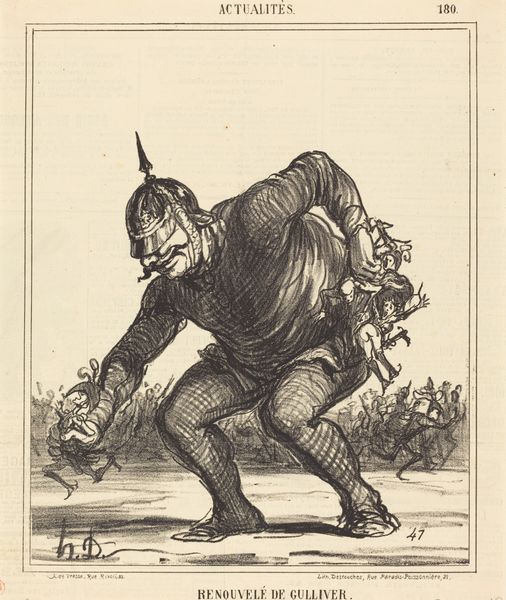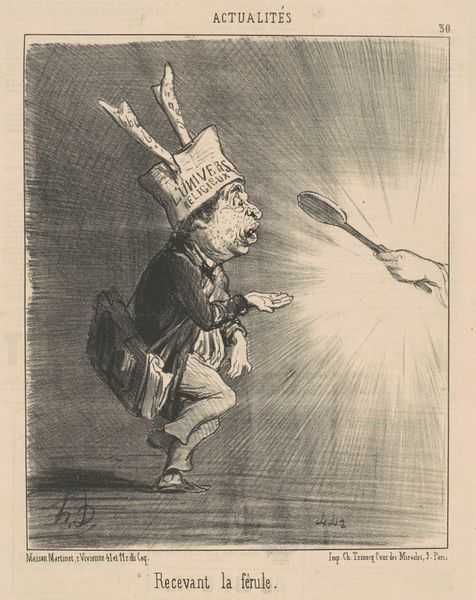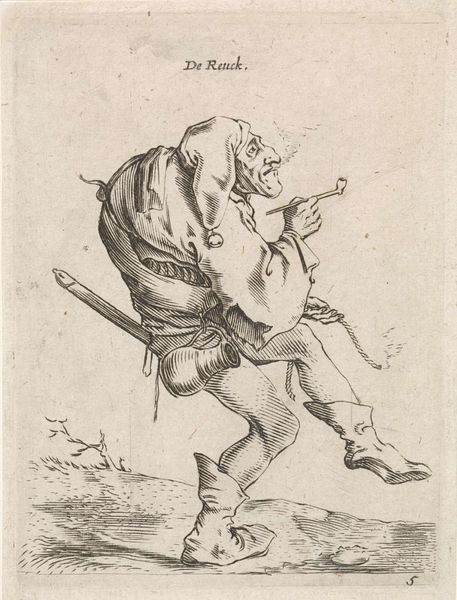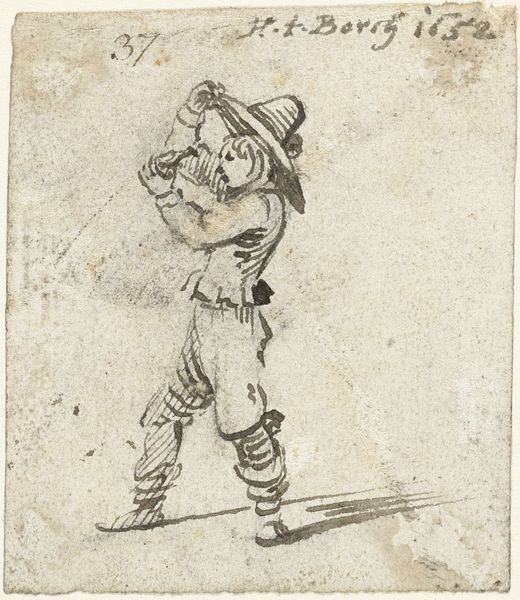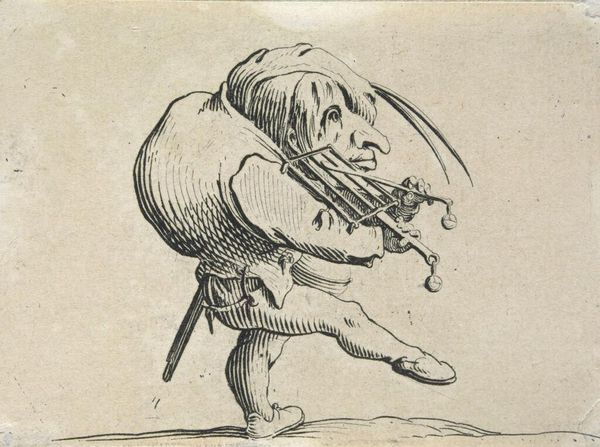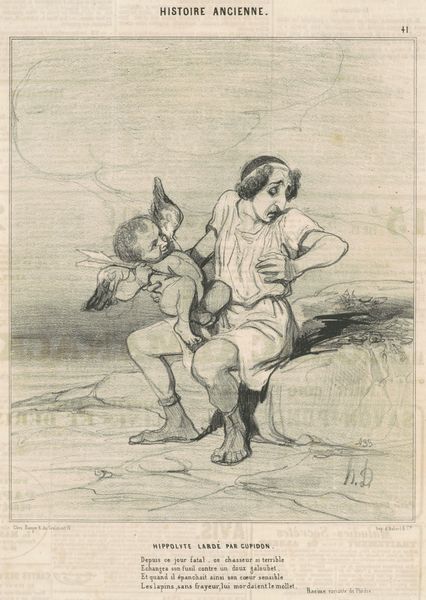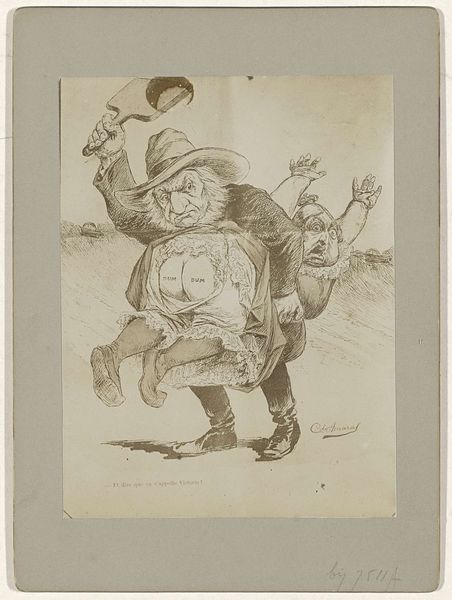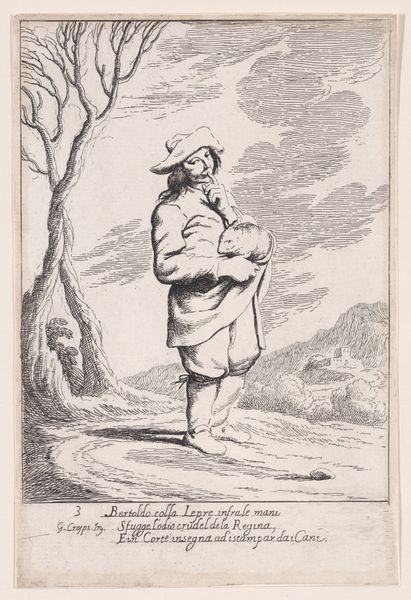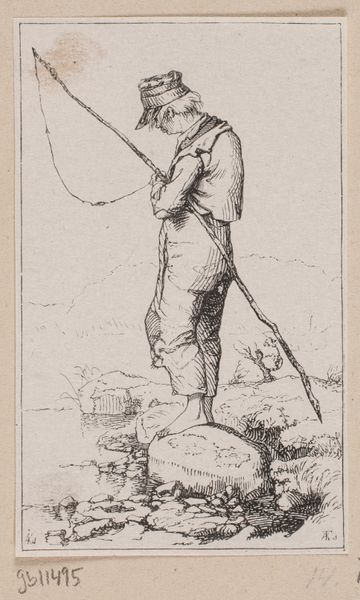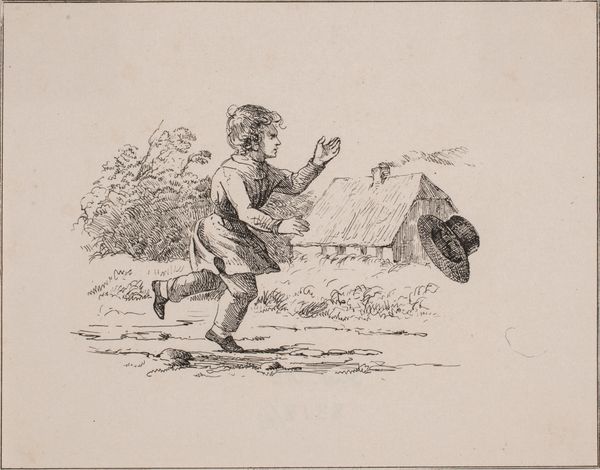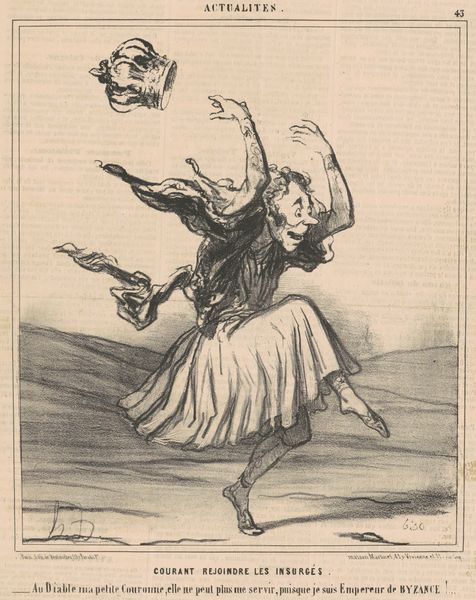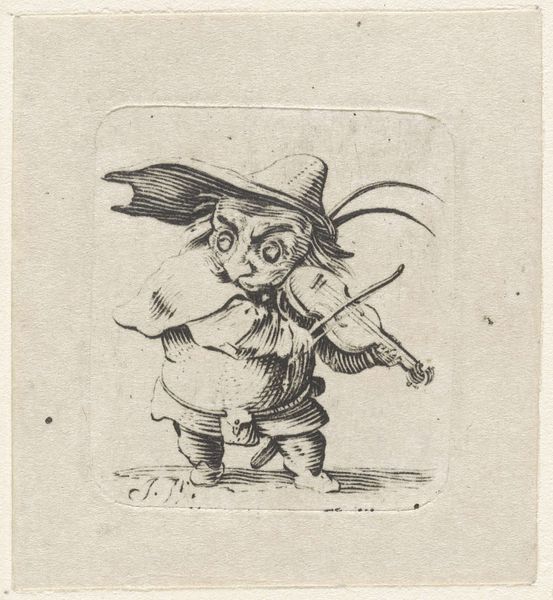
drawing, print, ink, woodcut, pen
#
drawing
#
narrative-art
# print
#
fantasy-art
#
ink
#
folk-art
#
pen-ink sketch
#
woodcut
#
pen
Dimensions: 106 mm (height) x 69 mm (width) (bladmaal)
Curator: Immediately striking is the artisan-like detail within such a humble scene; look at the miniature figure with a helmet, chisel in hand. Editor: It evokes such whimsy! There’s a playfulness here; it almost feels like stumbling upon a hidden, fantastical world within the ordinary. Curator: Indeed! This is "En nisse indhugger årstallet 1846 i en klippe," or "A Nisse Carving the Year 1846 into a Rock," by H.C. Henneberg, crafted in 1846. Primarily utilizing ink, woodcut, and pen for the drawing, it is housed at the SMK in Copenhagen. Note the thematic engagement with folk and fantasy art traditions. Editor: It's fascinating how Henneberg uses what seems like primitive methods--pen, ink, and woodcut—to convey such depth and texture. You can almost feel the rough surface of the rock. I'm intrigued by the figure itself. Curator: That "Nisse," central to Nordic folklore, a mischievous, dwarfish spirit or house elf! A symbolic figure connected to both the domestic and natural worlds, here frozen mid-act, forever carving his existence. He appears focused entirely on inscribing the year within the unyielding stone. Editor: Precisely, that dedication intrigues me! Think about the labor involved in this small woodcut. There's the physical act of carving, but then, beyond that, the entire social context and mythology behind it. The production involved skill in material use: carving blocks, mixing inks for permanency. And considering consumption, how widely circulated these kinds of prints would have been. It creates intimacy with audiences now generations removed from 1846. Curator: Agreed, his material interaction with the environment lends significance, even mythologizes the quotidian act of artistic creation. But within, observe its composition through form and line, see how his figure interacts and almost merges within his environment and the numbers taking the forefront; what is he, if not just the artisan here? The focus is on how that specific scene evokes narrative and mood; it represents more than its raw components, right? Editor: I agree, seeing labor enshrined within those lines gives depth to folklore that resonates today in interesting ways. It has me reflecting on this relationship in unexpected terms. Curator: Absolutely, observing how Henneberg captures a sliver of life, gives us a little peep into folklore—through the artisan and artistry that remains with the legacy within the stone—well worth studying!
Comments
No comments
Be the first to comment and join the conversation on the ultimate creative platform.
